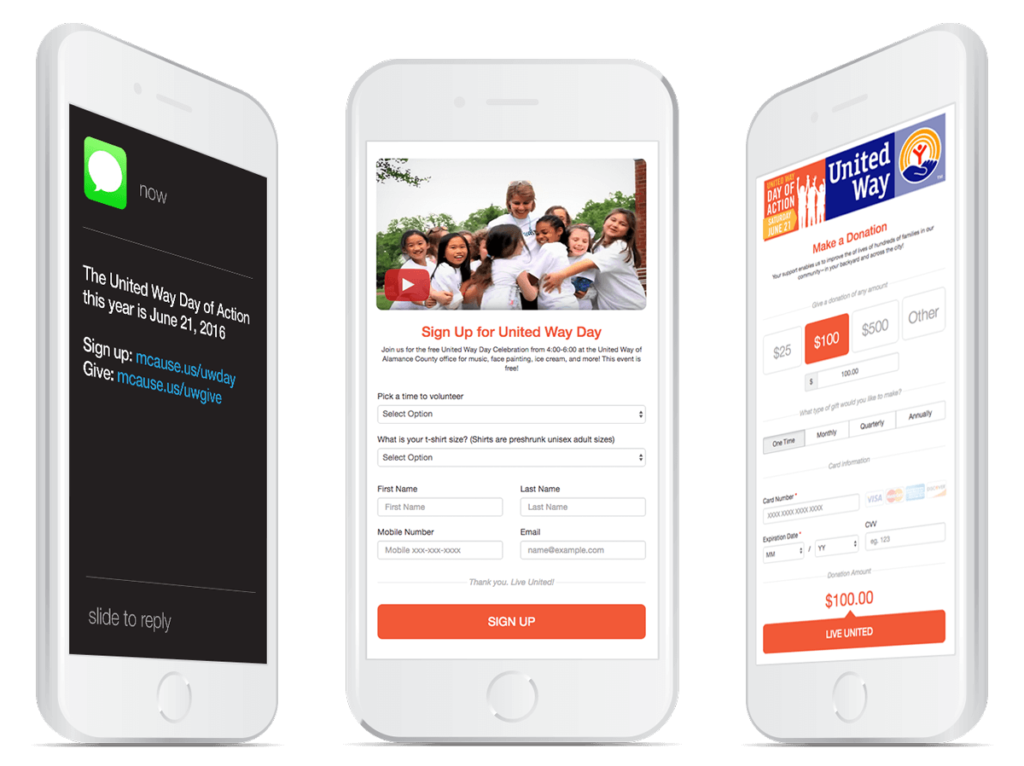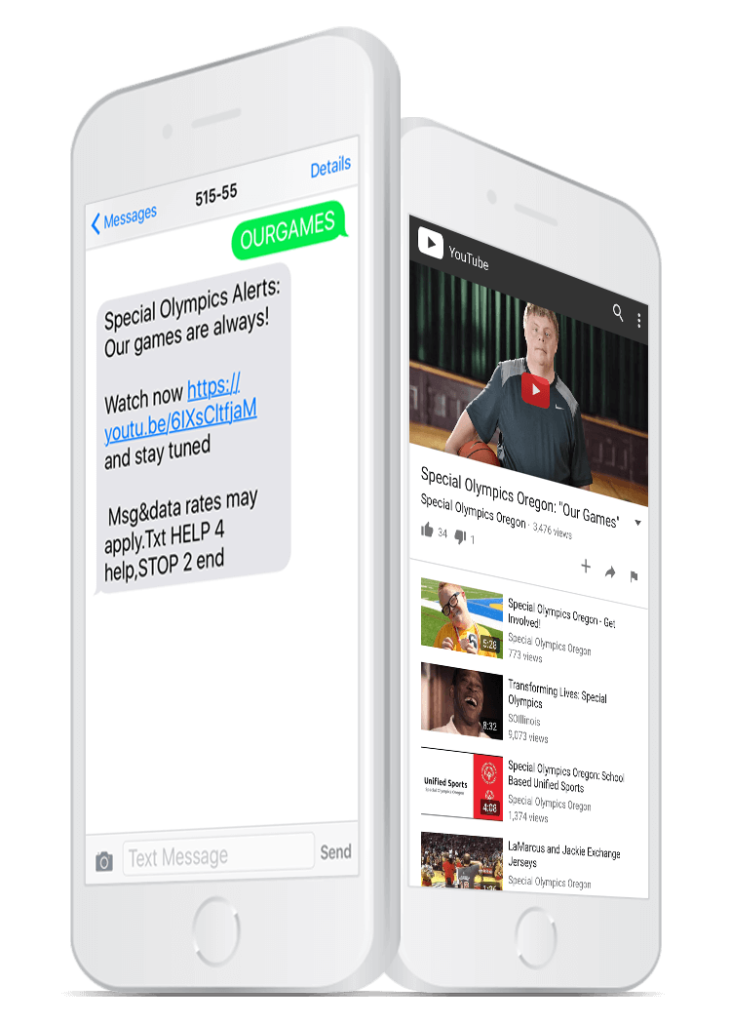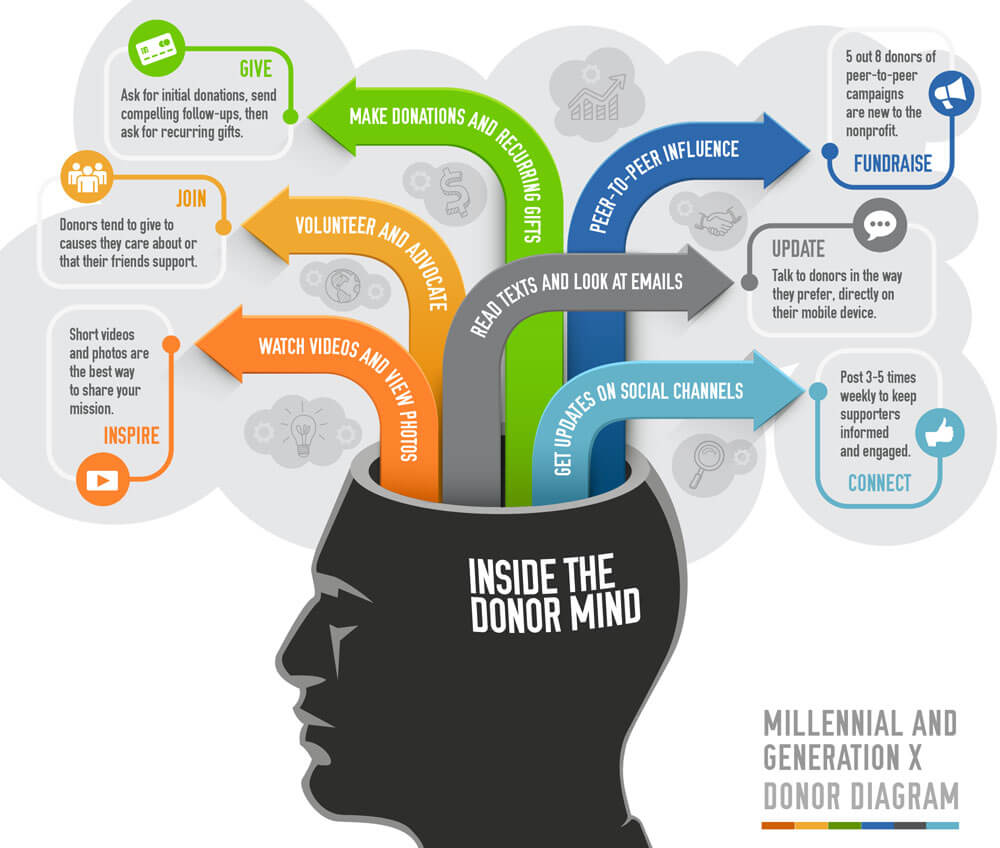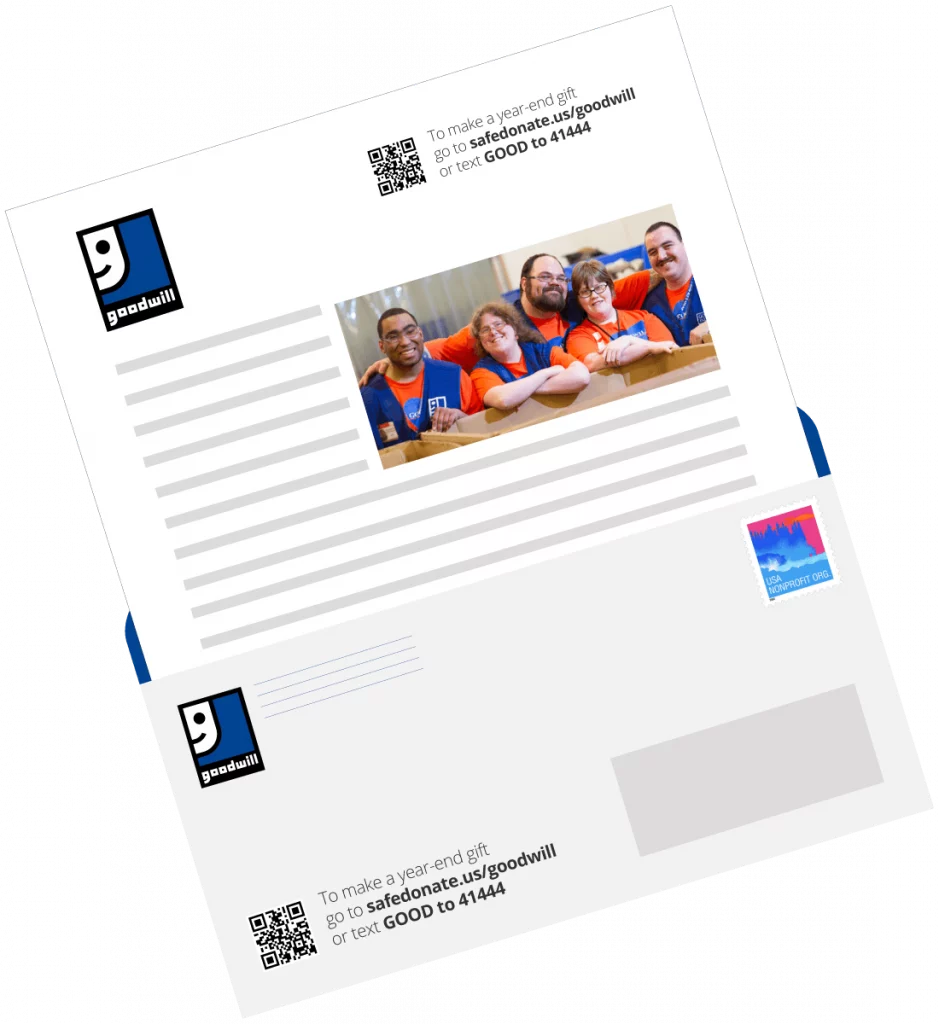Text Messaging for Nonprofits

Ensure your supporters receive every update you send with a text messaging service that will strengthen your nonprofit’s fundraising and communications throughout the year.
Of course, smartphones have fundamentally changed the way donors live, work and play

Smartphones are the most personal and ubiquitous type of device. Everywhere you look, people are constantly on their mobile phone for work and play. Understanding best practices, statistics and how mobile communication can strengthen fundraising is essential for nonprofit organizations.
It is very important to diligently collect mobile phone numbers from donors and supporters because a person’s mobile number is the communication anchor that keeps nonprofit organizations connected to individuals from decade to decade. Mobile phone numbers rarely change!
Every year more donors and supporters:
- Move from place to place which negatively affects your direct mail campaigns
- Cancel their home phone service which reduces your phonathon effectiveness
- Change email addresses which hampers your email reach
Bottom line:
If you want to ensure your content is seen by supporters, you need to text them. Videos, pictures and stories that are cross promoted over mass text messages, email and social media yield the highest response rates because they reach across a wide rage of demographics.
Know the Numbers
Over the last 15 years, mobile has become an increasingly essential component of fundraising. The statistics below show how mass text messages from nonprofits are the gold standard for connecting donors to the causes they care about.
- 90% of people read text messages within the first 3 minutes
- The average American checks their phone over 85 times per day
- 90% of Americans own a cellphone, 68% own a smartphone
- 41% of U.S households are cell phone only without a traditional land-line
- 99% of text messages are read (compared to only 14% of emails)
- 70% of donors report that texts are a good way for nonprofits to get their attention
- 62% of donors report they would like to use text to communicate with organizations
The Text Messaging Phenomenon
Text message keywords and communications help increase response rates for everything in your nonprofit organization.
The first text message was sent in 1992 and read “Merry Christmas.” In 2016 more than 8 trillion texts have been sent.
On average, Americans send and receive 32 texts per day (950/month or 11,520/year).
In the last 20 years text messaging has become the most popular form of communication in the world. Unlike voicemails, emails, and social media posts, text messages guarantee that your message is seen.
81% of Americans text regularly and text twice as much as they call.

Anyone who texts your text message keyword to a shortcode is automatically subscribed to receive ongoing text message reminders and updates from your organization.
76% of supporters appreciate text message reminders and updates from nonprofit organizations. Those that choose not to receive future messages can unsubscribe instantly by conveniently replying STOP. If they want to resubscribe they can simply text any of your keywords to be automatically resubscribed to your list.
There is a special provision of the Telephone Consumer Protection Act that allows nonprofits to upload lists of supporter phone numbers and send them text message updates, making it easy for you to get started in sending text messages to your constituents!
How To Build Your Mobile Subscription List
In order to send out text messages, first you need to set up a text messaging service for nonprofits like GiveSmart to enable your organization to send mass text messages to your supporters.
Once you have this set up you’ll want to collect mobile numbers any time you can. Without cell phone numbers your mobile marketing campaign will not work because you will have no one to send to, so be sure to ask at every point of contact.

Upload a list: Upload all phone numbers from your existing database for mobile number validation and send a subscription notification text message.

Update your forms: Add “Mobile Phone Number” to all digital and paper forms for future collection and upload.

Send a text: The first text message you send should contain a link to a short personal video telling subscribers about your mission and thanking them for their support.
• Promote subscriptions at live events by giving verbal instructions to text your subscription keyword.
• Incentivize new subscriptions. Examples: text to win, text to enter a raffle or drawing, text to see videos, text to get exclusive downloads.
• Promote subscriptions via email blasts, print newsletters, Facebook, Twitter, LinkedIn, other social media, print materials, paid media and signage.
• Promote your subscription keyword in a graphic on Instagram, Facebook and other social media channels.
• Promote mobile subscriptions in videos by inserting text instructions to subscribe.
Tip:
Put yourself in the constituents’ shoes and offer a compelling reason to get text messages that will appeal to that group of people. You may want to segment donors by age, income level, and any other segmented data you may have.
Top 18 Ways NPOs Use Keywords for Mobile Marketing
1. Text to Make Credit Card Donations
2. Text to Setup Recurring Gifts
3. Text to Make Event Pledges
4. Text for Updates and Alerts
5. Text to Sign Up
6. Text for Daily Encouragements
7. Text to Buy Tickets
8. Text to RSVP
9. Text to Volunteer
10. Text for Tips
11. Text for Instructions
12. Text for Resources
13. Text for Business Card
14. Text to Sign Petition
15. Text to Become Member
16. Text to Pay Dues
17. Text for Payroll Deductions
18. Text to Take Surveys
Text Messaging Best Practices
Because it is nearly impossible to ignore a text, be sure you’re being thoughtful as to when you send them. Don’t send messages when people are sleeping or eating dinner. It is best to send messages during the daytime when people are active on their phones. Be aware of time zones!

Send Videos: Send regular text messages with links to short videos and photo galleries that show the impact of your organization and how supporter donations help you do more good.

Don’t Spam: Only send text messages to people who are familiar with your organization.

Be Strategic: Be strategic about asking for donations. Never ask for money before sending a series of compelling communications that indirectly showcase WHY people should give.
Important Reminder:
The biggest mistake organizations make is asking for donations in the first text message they send. Inspire your supporters first, then watch the donations roll in.
Is Your Nonprofit Invisible To Two-thirds Of The U.S. Workforce?
Fundraising is changing. The way you communicate with your supporters is more paramount than ever, and Millennial and Gen X donors are the new status quo in the American workforce. Here’s how your nonprofit can target this new generation of giving:
Did you know?
Millennials (age 18-34) and Generation X (age 35-50) now make up more than two-thirds of the US workforce.
In just 4 years, Millennial and Gen X donors will make up over 70% of the workforce in the U.S.
With Baby Boomers (age 51-69) retiring, their disposable income for donations is becoming lesser and lesser. In fact, over half of people age 55+ currently have insufficient retirement savings.
How Nonprofits Can Engage Donors In The Workforce
87% of Millennials donated to charity last year. Gen Xers give $465 annually. Both are motivated to give by passion. Here’s how to make them care about your cause.


Millennials (Age 18-35)
Millennials respond to text messages and are active daily on social media. These donors check personal email infrequently and are generally unresponsive to voice calls.
The Millennials generation donates an annual average of $481 to 3.3 nonprofits. Millennials are most likely to donate via mobile, give in response to videos, and prefer to give via crowdfunding campaigns.

Generation X (Age 36-50)
Generation X responds to email, voice calls and text messages. These donors tend to stay up to date on social media feeds.
59% give each year, donating an annual average of $732 to 3.9 nonprofits. Gen X are most likely to fundraise on behalf of an organization, make a pledge, and volunteer their time.
Top Mobile Alerts That Your Donors Will Love
Text message communications must be entertaining or essential or they will be ignored and donors will unsubscribe from alerts, causing you to have to rebuild your list.
Never ask for donations over text message before sending a series of engaging content. This is the most important tip to remember when planning your text message communication strategy!
Best Ways to Text Message Donors
- Impact Videos and Photos that Showcase Your Cause
- Real-time Campaign Updates
- Reminders and Directions for Events
- Social Media Links
- Volunteer and Staff Encouragements
- Thank Yous and Campaign Results
- Newsletter Links
- Tax Receipts
- Pledge Fulfillment and Expired Recurring Gift Notifications
- Donation Opportunities
How to Strengthen All Communications with Text Reminders

Email
Send text messages with links in parallel with email blasts. When a person receives both a text and an email they are twice as likely to click on your content.

Social Media
Send text messages with links to social media posts encouraging
people to follow, like and share your cause with their networks

Direct Mail
Send text messages in parallel with direct mail campaigns. A donor is 3 to 4 times more likely respond to direct mail when they receive multi-channel communication.
Use Texts For Fundraising Success
Integrate a mobile communication strategy in your nonprofit marketing plan to boost your existing fundraising efforts and improve the return on investment for every one of your organization’s campaigns.